The Battle of Rosebud: Indians vs. Indians
Well, the beginning of these events was laid by the “Black Hills Gold Rush” when the number of gold miners in He-Zap or the Black Hills exceeded fifteen thousand people and continued to grow with each passing day. As a result, the situation in the area strained to the limit, and individual attacks of Indians on them escalated into a real war, called whites “The War for Black Hills”.
At first, the US government tried to simply buy Indian lands, but it was not possible to reach an agreement, as most Indians did not hide their indignation. It got to the point that one of the Dakota named Little Big Man who represented the leader announced Crazy Horse, during negotiations with the hard drive in his hands, stepped forward and shouted that he would kill all the pale people if they tried to steal his land. His words greatly aroused the Sioux, and only the intervention of a Young Man Afraid of His Horses prevented bloodshed. However, negotiations with the Indians were thwarted. The leaders of Spotted Tail and Red Cloud again visited Washington and refused to sell the Black Hills for the money they were offered, that is, for six million dollars with the payment of the entire amount for fifteen years, and offered their price. The leader of the Red Cloud demanded that the next seven generations of Dakota be supplied with livestock, foodstuffs and even "pepper for the elderly." Then he demanded a light cart with horses and a team of six working oxen to each adult man. In turn, Spotted Tail demanded that all of this be supplied to the Indians "as long as Sioux exist." Although these two leaders constantly competed with each other, in those cases when it came to tribal interests, the Red Cloud and Spotted Tail always acted together and, if they wanted to, they firmly stood their ground. It turned out that the red-skinned savages offered to pay them no less than forty dollars million! While the entire territory of the Wild West, from the east of Mississippi and Missouri to the Rocky Mountains, the United States bought from Napoleon in 1803 for only fifteen million! And here, in general, a small plot of land already paid for and suddenly such prices ?!
Then the US government 6 December 1875 of the year presented an ultimatum to the Indians, which expired on January 31 1876. According to it, they had to register first, and then go to the reservations prepared for them. Otherwise, they were declared enemies, to whom it was allowed to use force. The messengers were sent to the winter camps of the Indians. But it was impossible to roam in the cold, so only a few obeyed the order, and most of the Sioux and Cheyenes did not move. It turned out that the Indians simply ignored the ultimatum of the government, so Washington decided to force them to accept it by force. 18 January ban was issued to sell weapons and ammunition to the Indians. And on February 8, troops stationed on the border received orders from the military department to prepare for a military campaign.
However, the punitive expedition, which began in the spring of 1876, could not reach the goals, as the soldiers could not overtake the Indians. Therefore, the whole calculation was on the summer campaign, which was planned in a much more serious way. The army had to attack the Indian territory in three large columns, from different directions, in order to crush the Indians once and for all and force them to move to the reservations. Colonel John Gibbon came from the west, General Alfred Terry from the east, and General George Crook from the south.
The essence of the war was that US troops pursued Indian tribes, traveling with women and children. Moreover, they tried to attack the small camps and did not disdain the killing of women and children, which caused a mass retreat of Indians of different tribes, unwittingly united into one big camp in the south of Montana, headed by High Priest Dakota Tatanka-Iyotake.
However, many of the prairie Indians in this confrontation were supported not by Indians, but whites. So several Shoshon tribal leaders, led by the Vashaki leader, decided that it was better to obey the whites than to fight against them. The leader of the Utes, Urai, bluntly stated that he liked the way the pale-faced live. Being a hospitable man, he did not hesitate to entertain guests with drinks and cigars. Back in 1872, he sold a significant portion of his land to the US government and now received an annual pension from him in 1000 dollars.
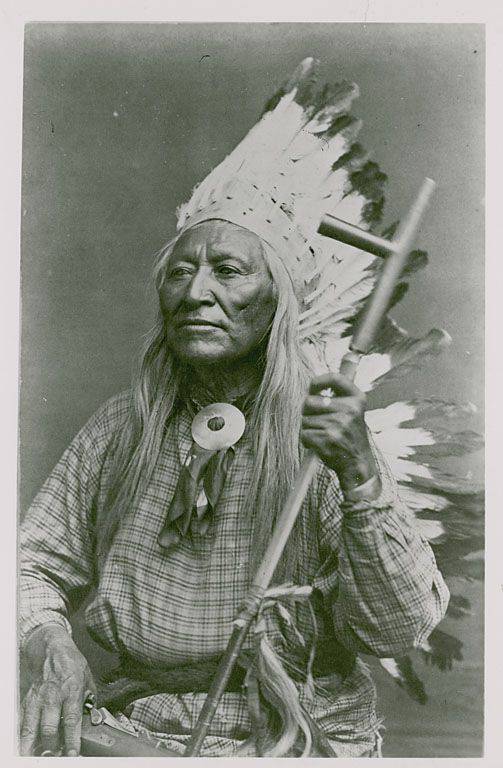
Chief Crow Washaki
Guadalupe, the leader of the caddo tribe, also suddenly felt a great desire for civilization. He supplied the army of the United States of intelligence scouts, because he believed that not only redheads with pale-faced people were fighting, but nomads and sedentary people (what a wise man, however, understood the essence of the conflict of cultures and civilizations!). And since his tribe Kaddo belonged to the culture of farmers, it automatically brought him closer to the people of the white race and forced him to hate the nomads.
The Crow tribe also supplied an army of excellent scouts, but their motive was different: an old feud with the Dakota, for the sake of victory over which they were even ready to curry favor with the pale faces.
Their leader named Many Exploits advised his soldiers to help the white in their war against the Sioux, because “When the war is over, the leaders of the soldiers will remember the help that we will now give them!”
The pawnees supplied their scouts to white for the same reasons as the Crow, but it cost them dearly. In 1873, a large Sioux detachment took a group of Pawney Indians unawares during a hunt. White soldiers rushed to the aid of their allies, but they were late: they had already lost only the killed 150 people, and the Indians killed them and the leader himself. The same Vashaki also suffered from the Sioux. Back in 1865, 200 Sioux raided his summer camp on the Sweet Water river and drove around 400 horses. The Vashaki led a detachment to repel them, but the Shoshons lost the battle. And the eldest son of Vashaki Sioux was killed and oskalpirovali right before his eyes.
All these mutual strife were only to hand to General Crook, who never dreamed of successfully conducting this campaign with some white soldiers, because, based on his experience, he knew well that only Indians could track the Indians on the prairie. No white man can do what an Indian could do and so beautifully pursue animals and people.
After all, an Indian scout for the remaining dust in the air could establish whether it was abandoned by a herd of bison or an enemy military detachment. From obscure hooves and moccasins on the grass, he could establish both the intentions and the number of the enemy detachment, as well as the long time he had gone hiking, and where he was going. Imitating the singing of birds or the cries of animals, they warned each other about the danger. In addition, scouts were a full-fledged fighting squad and masters of swift attacks and hijacking of enemy horses.
Therefore, as soon as General Crook received an order to speak, he immediately turned to the Shoshons for support and immediately received it. Meanwhile, the third detachment commander, Colonel John Gibbon, with whom the entire 450 soldier was marching, moved east from Fort Ellis in southern Montana, but first met with the Crow leaders at an agency on the Yellowstone River, and said before them the following speech: “I came here that would start a war with a sioux. Sioux are our common enemies, they have killed both whites and crows for a long time. And so I came to punish them. If Crow want war with the Sioux, then the time has come for it. If the Crow want the Sioux to no longer send their military units to their lands, if they want them to kill more than their men, then now is the time for that. If they want to avenge the dead crows, then the time has come! ”Naturally, the young crows were inspired by this speech and thirty people immediately joined Gibbon, and the rest promised to approach General Crook in two months.
Already in early June, Crook set up a camp and built a warehouse for ammunition on the Goose Creek - a tributary of the River of Languages near the border of Wyoming and Montana. It was there that he received a warning from Chief Siu Tachunko Vitko: "Any soldier who crosses the River of Languages and moves north will be killed."
This warning should be considered, but now General Kruk knew exactly where to look for these elusive Sioux, and decided to cross the river as soon as the Indian Scouts approached him. And on June 14, 176 Crow warriors arrived at his camp with the leaders of the Magical Crow, the Old Crow and the Kind Heart. After another day, Shoshons from 86 came to him along with the leader Vashaki and his two sons.
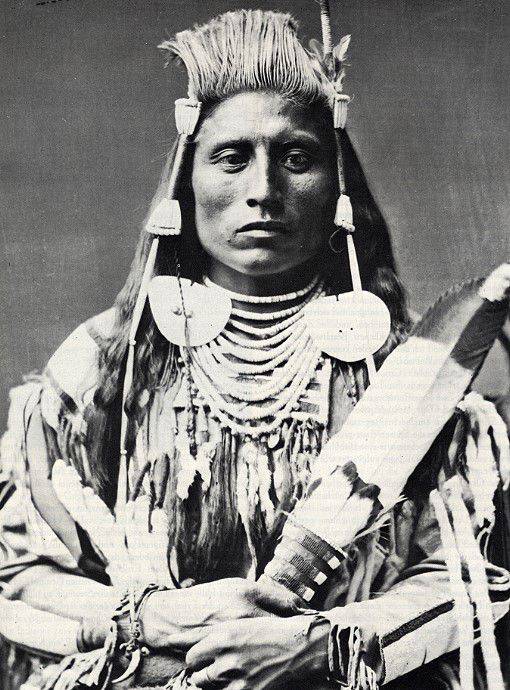
Crow Chief Magic Crow
One of the officers, who served under the command of General Crook, later recounted: “The long rows of brilliant lances and well-kept firearms heralded the arrival of our long-awaited Shoshone allies. The Shoshone rode towards the main headquarters, then turned around and surprising everyone with a skillful dressage of horses, moved forward. No warriors of civilized armies moved so beautifully. With exclamations of surprise and delight, this barbaric platoon of harsh warriors was greeted by their former enemies, and today's friends by the Crow. Our general went forward to look at them in all their ceremonial regalia of eagle feathers, brass blyah and beads. And when they were ordered to retreat one by one to the right, they moved like an exact clockwork, and the dignity of real veterans. ”
Now his forces numbered 1302 humans: 201 infantrymen, 839 cavalrymen, and 262 Indian intelligence officers. That same evening, he gave advice to the officers and Indian leaders. The Washaki and his Crow allies asked permission to be allowed to act differently in this war with the Sioux, and the general willingly gave them complete freedom of action.
The meeting soon ended, as the whites decided that the Shoshone warriors drove 60 miles, and therefore they needed rest. But they decided to prepare for war in their usual way, which meant that at night they would dance!
The “dance vigil” began with a monotonous howl with shouts and cries, all of which were accompanied by ear piercing and booming drums. This attracted soldiers and officers from the entire camp, who were free from the guard service and fled to watch such an amazing show. And they saw the Indians sitting near the small fires, and they swayed from side to side along with their leader and sang monotonously. In these singing it was impossible to distinguish individual words, but it made a fascinating impression, as well as their very swinging. The “night of the dances” ended only at dawn, when Kruk and his unsatisfied soldiers and Native American allies together withdrew from the camp, crossed the River of Languages and headed north-west to Sioux territory. Native American scouts went ahead and soon after noon came back and told that they had found traces of a large Sioux camp and even a large buffalo herd, which these Sioux had spooked.
Meanwhile, Crook's detachment stopped on the River Rosebud, where he arranged for a halt in a large lowland that looked like an ancient amphitheater, surrounded on three sides by hills, and a stream on the fourth channel. The soldiers were ordered to saddle the horses and let them graze in anticipation of the approach of the lagging part of the column. Part of the soldiers was located on one side of the stream, and the other - on the opposite. To the north rose a ridge of low cliffs, and then a chain of low mountains led to a dining elevation. From the plain of what was happening at these heights and behind them, naturally, it was impossible to see. The leader of Vashaki and the other leaders of the Crow were convinced that it was there that the enemies were hiding, while the people of Kruk, not suspecting anything, rested on a completely open plain, and even separated by a stream. The general himself believed that the Sioux camp was somewhere nearby, and he only needed to find him and destroy him. However, his Indian allies told him that Crazy Horse is too experienced a warrior to make a target out of his camp and that, most likely, he wants to lure the whites into a trap. Therefore, the Vashaki and the leaders of the Crow gave the order to their soldiers to take up positions on the mountains to the north, and sent scouts over the hills to see if there were any enemies hiding there. Less than half an hour, they galloped back, shouting: “Siu! Sioux! Lots of Sioux! ”, With one warrior seriously injured. Shots rang out - this was the vanguard of the horses that were hopping behind them, and stumbled upon army guard posts. Then the Indians, as if out of the ground, appeared on both the western and northern hills, and they galloped, hiding behind the grain of their horses.
It turned out that only part of Crook's army was ready to fight, and then these were Shoshone and Crow warriors. They were not afraid of the numerical superiority of the Sioux, and immediately went to the counterattack. Meanwhile, only the first attack involved fifteen hundred Sioux, while Crazy Horse kept in reserve about two and a half thousand warriors who were hiding behind the hills in order to strike at the disorganized and then pursue the retreating. But it turned out that the Shoshons and Crow managed to stop his warriors five hundred yards from the main forces of Crook, and held them back until he organized a fairly strong defense. Then he sent his units forward to support the Indian allies, and placed all the other soldiers in advantageous positions. As for Vashaki, he not only skillfully commanded his warriors, but also saved Captain Guy Henry, wounded by a bullet in his face and lying unconscious on the ground. Siou galloped to him to take off his scalp. But here, the Washaki arrived in time to help the officer, and along with the Shoshone named Little Tail and his other soldiers, defended Captain Henry, until the soldiers reached them and carried him to the camp.
Sioux attacks followed one after another and each time the scouts beat them off. Some of them got off their horses and aimed fire at them. Others, on the contrary, rushed into the thick of the fight, where the Indians fought with the Tomahawks, lances and knives, so that all the bushes of wild roses that covered the whole valley were trampled and stained with mud and blood. Many Crow and Shoshone were so carried away by the pursuit of the enemy that they were too far away from their main forces and began to return, and the Sioux in turn began to pursue them.
Meanwhile, General Crook, clearly unaware of the enemy’s great superiority, soon after noon ordered Captain Mills to send his main forces north upstream of the River Rosebud to attack the Sioux camp, which he believed was only a few miles away. Crook reckoned that this would distract the attention of the Indians, and then he would send help to Mills and the battle would be won. However, contrary to his expectations, the enemy not only did not leave the positions, but on the contrary, attacked his center, weakened by the departure of Mills soldiers. Crook quickly realized his mistake and sent messengers to return it back. Fortunately, Mills quickly realized what to do, and, taking his people out of the canyon, described a semicircle on a plain located on a hill, then returning to the battlefield, attacked the main forces of the Sioux from the rear, taking them by surprise. Seeing that they were surrounded, the Sioux Indians galloped off into the prairie, leaving the white people, confused by this strange manner of theirs, to disintegrate and disappear in such lightning manner.
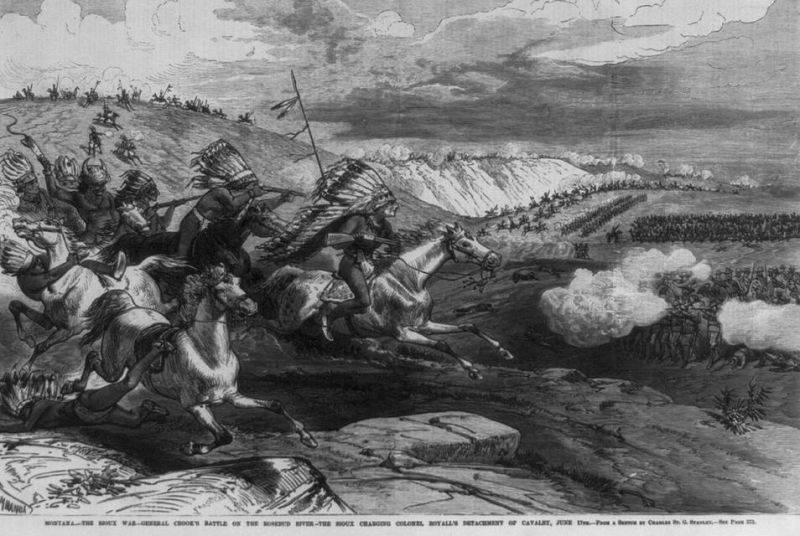
The Sioux Indians are attacking American soldiers at Rosebud. Illustration from the newspaper of the time
The general could celebrate victory, since the battlefield was left behind him, but in reality this battle was his defeat, because to the utmost the tired and wounded soldiers of Crook were unable to continue the battle and even more so to pursue the Indians. They were scattered over a large area, spent nearly twenty-five thousand rounds of ammunition, but at the battlefield they found only the bodies of thirteen Sioux killed! Kruk himself had irretrievable losses in 28 people, counting both Indian scouts and 56 people seriously wounded. All this forced him to return to his base camp at Goose Creek, which he did the next day, that is, he finished the whole thing where he started! And it should be noted that if it were not for the Indian allies of the pale-faced, then ... this clash could turn into an even more severe defeat for him than what was expected of General Custer a few days later!
And in this case, the Americans made the right conclusion from the experience of this war and actively attracted to their side those who for some reason are ready to fight for their interests with their own people! However, the British and the Germans did this in Europe and in the USSR, in a word, this is a worldwide and very effective practice, which nobody should forget about today!
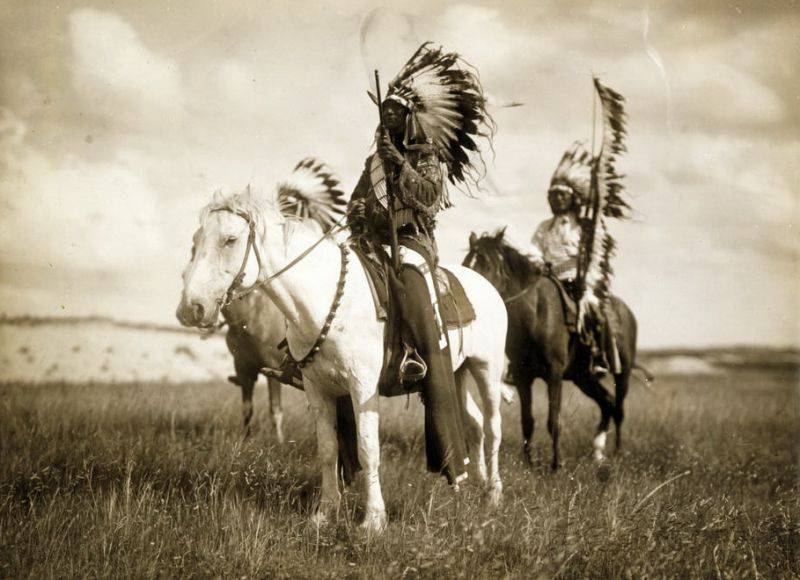
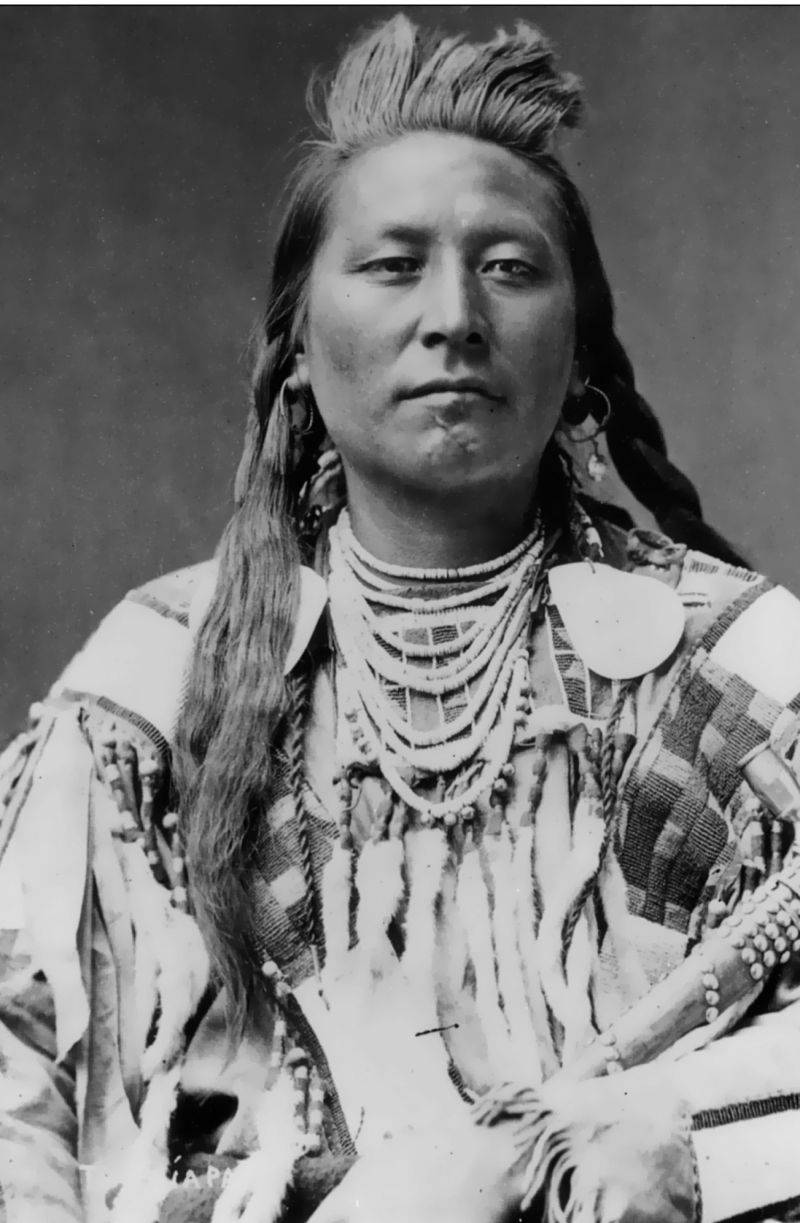
Information